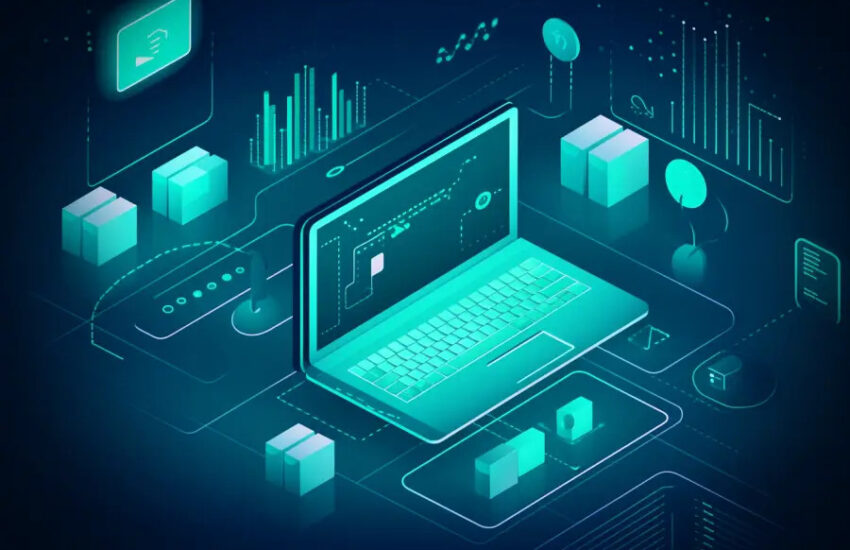Revolutionize E-Commerce with Headless Agility and Low-Code Power
E-commerce platforms continue to evolve at an increasing rate. To keep up with rapid innovation, platforms are moving away from monolithic all-in-one applications and toward a ‘headless’ model where the front-end interface is separated from back-end management applications. In 2023, 63% of retailers said they would leverage headless commerce, and that number will continue to rise–for good reason. Simultaneously, low-code is revolutionizing how applications are developed. Our Interplay® Commerce (IPC) combines a headless model with low-code to provide a revolutionary platform for e-commerce.
What you need to know about Headless Platforms:
Headless E-commerce architectures separate the front-end and back-end of an E-commerce platform. The front-end interface management applications are controlled by separate CSS and javascript management applications, while the back-end systems (e.g., order management, product management, inventory levels, etc.) are handled by the E-commerce application.
Headless E-commerce is better because it can be deployed quickly, as each function (e.g., pricing, inventory management, payment gateway) is independent. Deployment is not a ‘waterfall’ project; it can be agile as each function is ready. Because headless systems exist as a network of interconnected APIs and segmented function-specific applications, those applications can be upgraded, modified, or extended as needed without having to change/upgrade the entire system. This brings flexibility to each function as the needs of the enterprise evolve. A creative design team can use the tools that are best suited to their workflow, regardless of what is powering the backend operations of the e-commerce platform.
Conversely, back-end developers don’t need to sweat the details of how interfaces may look to the end customer. When designers and developers don’t fight over tools–everybody’s happier. At the start of this decade, customer experience was stated as the #1 key brand differentiator, outperforming both price and product. This still rings true today. An E-commerce platform that greets consumers with a positive and customized experience leads to more purchases and conversions; excellent UX design is critical.
There are several headless E-commerce platforms available. Our platform, Interplay, is a headless architecture platform and a low-code drag-and-drop platform; combined, this is a potent combination. Typical headless systems are abstracted API systems that adapt to retailers’ needs. This also means functionality and features must be custom-added and are often missing functionality for advanced commerce operations, leaving the specific implementation to the retailers’ development teams. Due to its microservices and API-driven architecture, headless commerce systems are over-engineered. This causes the implementation of headless commerce to go over budget and miss timelines, creating uncertainty for retailers. There must be coordinated middleware and out-of-the-box functionality. That’s where low-code comes into play.
What you need to know about Low-code platforms:
Low-code development environments place as many functions or code as possible into discrete modules or containers. Developers can then connect these modules in a drag-and-drop visual environment, which then connects those modules with appropriate data connections. Low-code development is better. Here’s why ours is the best:
- Faster development
Our Interplay team has developed a fully functional, production-ready E-commerce platform in just 17 days. This includes price books for several hundred store locations, inventory and order management, and several payment gateways.
- Democratized Development
Not everyone can write command-line code; now, not everyone has to. Basic modules have default configurations set and API connections already in place. A low-code developer can enter the required API keys for 3rd party apps and adjust specific configurations via the browser interface. It’s estimated that 450M apps will be built with low-code in the next five years.
- Flexibility and Security
With discrete modules put into separate containers, modules can be swapped easily. Moreover, the containerized structure dramatically increases the security layers: each module is treated as a secure, isolated piece of code. Interplay combines the benefits of headless E-commerce architecture with low-code development to provide a uniquely powerful and fast deployable platform. IPC has security built in at each module and has an overall security layer throughout. We process thousands of transactions securely every day for publicly-traded retailers.
Interplay is both Headless and Low-code:
- All core E-commerce functions
IPC comes with consumer application REACT templates, headless APIs, order management associate templates, merchant centers, pricing controls, and complete inventory management. That’s all before hooking into any of the myriad 3rd party nodes also available.
- 475+ existing nodes
Interplay has existing modules for inventory management, order management, payment gateways, legacy databases, and 3rd party martech providers, along with several leading AI engines, IoT connections, and data analysis tools.
- Speed of development
Flows can be created in hours with a pre-built schema. All that is needed is to bring your API keys. Development for a full-fledged E-commerce platform can be completed within 2-3 weeks. Complication made simple, Interplay brings all connections and 3rd party modules into containers within a unified Python environment. All modules can be customized, but often are good to go right from the first connection.
Low-code development offers many advantages, but the most important is speed. With Interplay, developers can code well, and they can code fast. When low-code is coupled with headless E-commerce through Interplay, a business can get all of the benefits of headless E-commerce with no risk.
Conclusion:
In conclusion, the dynamic landscape of e-commerce is witnessing a transformative shift, and our IPC stands at the forefront of this evolution. As 63% of retailers adopt the headless commerce model in 2023, we recognize the significance of decoupling front-end and back-end operations for unparalleled agility and flexibility. Headless systems, with their network of APIs and function-specific applications, redefine deployment methodologies, allowing for swift, non-waterfall implementation that aligns with the agile demands of the market. Emphasizing the paramount role of customer experience, Interplay integrates headless architecture with low-code development, ushering in a new era of creativity and efficiency.
The distinction lies in our approach to low-code development, where speed, accessibility, and security converge. Interplay’s low-code environment propels development at an unprecedented pace, epitomized by the creation of a fully functional e-commerce platform in just 17 days—a testament to the democratization of development. With an estimated 450 million apps set to be built with low code in the next five years, the accessibility of development will become a driving force behind technological democratization.
Furthermore, our platform’s modular architecture enhances security and flexibility. Each module, encapsulated in its container, not only facilitates easy swapping but also fortifies the entire system’s security. As we process thousands of transactions securely daily for publicly traded retailers, Interplay ensures that both speed and safety are not mutually exclusive.
Interplay is a fusion of headless and low-code paradigms, offering an extensive array of core e-commerce functions. With 475+ existing nodes covering everything from inventory and order management to payment gateways and AI engines, Interplay stands as a comprehensive solution for businesses seeking efficiency without compromise. The speed of development is a defining characteristic, enabling the creation of fully-fledged e-commerce platforms within 2-3 weeks, all within a unified Python environment.
In essence, Interplay redefines the possibilities at the intersection of headless commerce and low-code development. By seamlessly integrating these two transformative paradigms, we present a platform that not only meets the current demands of e-commerce but propels businesses into the future, ensuring that innovation is not just a buzzword but a tangible, attainable reality.

